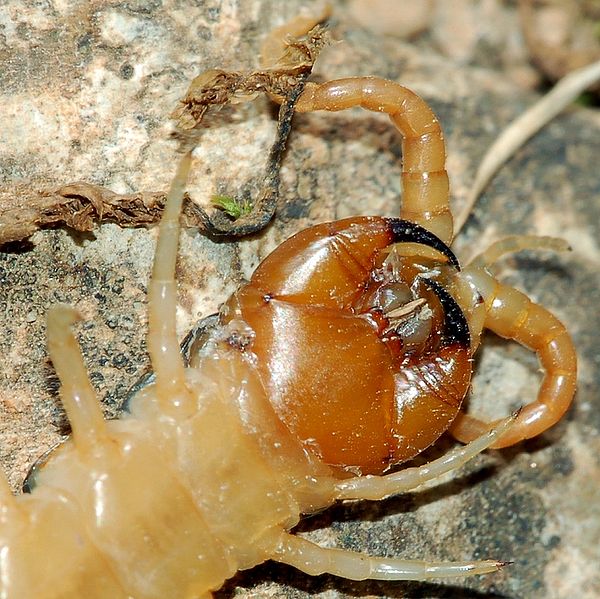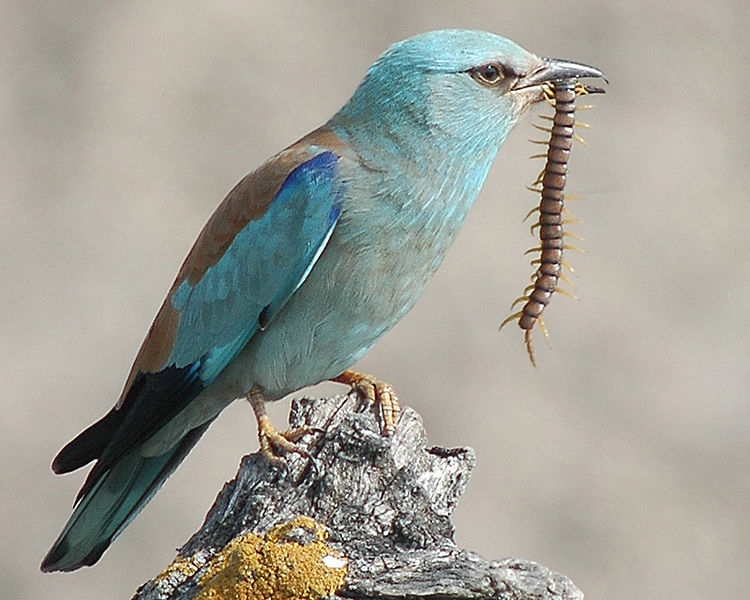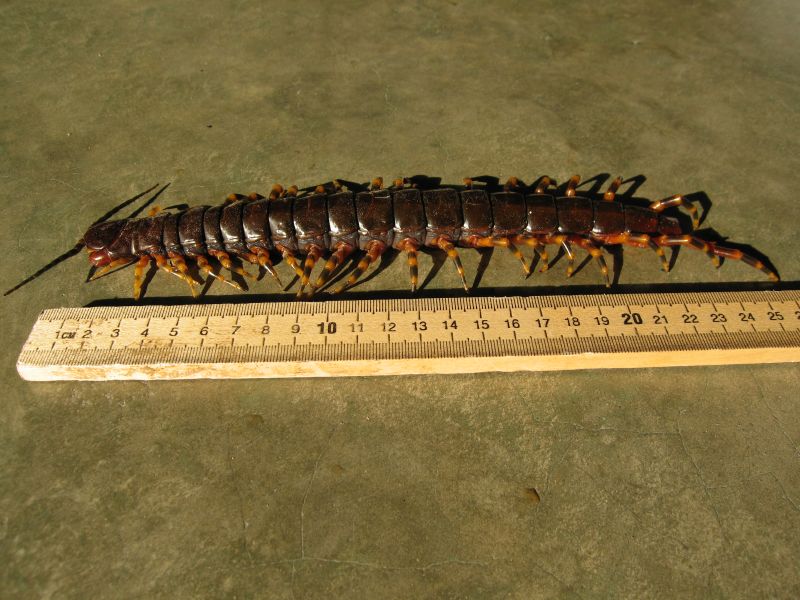Megarian Banded Centipede
(Scolopendra cingulata)
Form and Function
Scolopendra cingulata does not have have a hundred legs as the literal translation of the word "centipede" suggests. Instead, the body of a centipede, such as S. cingulata, is flattened and comprised of many body segments, each with a pair of legs. The posterior legs are spiny to ward off predators, while the anterior legs have been modified into maxillipeds that bite and include venom glands (Meshew, C. 2001). Scolopendra cingulata has adapted to being primarily a nocturnal organism like most centipedes and is found primarily around the Mediterranean Sea, check out Habitat for more info on its location! S. cingulata's behavior and reactions to environmental stimuli cement its place as a important factor in Mediterranean ecosystems!
During the day
it can be found in dark, damp places: under rocks, logs, and leaves. S.
cingulata prefers moist areas due the lack of a waxy cuticle in its
exoskeleton, which causes it to dry out very quickly when exposed during
daylight hours (Lewis. 1981). If disturbed
S. cingulata primarily
resorts flight if threatened but will not hesitate to administer its
toxic bite to the organism causing the disturbance before fleeing.
 Scolopendra cingulata is a carnivorous centipede like all other members
comprising the Scolopendra genus. Similar to other centipedes, S.
cingulata will prey on any organism smaller than it and primarily feeds
on small insects, such as bees, flies, wasps, and ants such as
Tapinoma melanocephalum. If large enough in
size S. cingulata will also feed on small mice and spiders, such as the
tarantula (Lewis. 1981). Scolopendra cingulata does not prey on larger
vertebrates like its congener
Scolopendra gigantea, which has been
documented growing up to 30cm in length (12 in) and preying on three
different species of
bats (Molinari etal., 2005). Visit this
YouTube video to witness this remarkable predation occurring in the
wild!
Scolopendra cingulata is a carnivorous centipede like all other members
comprising the Scolopendra genus. Similar to other centipedes, S.
cingulata will prey on any organism smaller than it and primarily feeds
on small insects, such as bees, flies, wasps, and ants such as
Tapinoma melanocephalum. If large enough in
size S. cingulata will also feed on small mice and spiders, such as the
tarantula (Lewis. 1981). Scolopendra cingulata does not prey on larger
vertebrates like its congener
Scolopendra gigantea, which has been
documented growing up to 30cm in length (12 in) and preying on three
different species of
bats (Molinari etal., 2005). Visit this
YouTube video to witness this remarkable predation occurring in the
wild!
Scolopendra cingulata
have a feeding mechanism like other members of the Scolopendra genus.
S.
cingulata will seize its prey with its claws and first few pairs of
walking legs, then S. cingulata will sink its maxillipeds into the
tissue of its prey and the venom is secreted by the glands within
(Lewis. 1981). The venom is extremely toxic to prey and causes paralysis
or death, similar to that of a
scorpion sting. The bite may be repeated several time to ensure its preys
mortality and allow hassle-free feeding. S. cingulata has also been
observed to scavenge in some cases but not frequently. This scavenging
should not be confused with hyena-like scavenging for it is solely
opportunistic and random (Lewis. 1981).
Although terrifying to humans, especially due to their notoriously
painful bite, members of the
Scolopendra genus are not at the top of the food web in their
ecosystems!The primary organisms that prey on S. cingulata and other
centipedes are birds but
meerkats are also another, more exotic
predator.

Scolopendra cingulata has both a negative and positive impact on human life. The negative impact is most commonly recognized, although the positive is much more frequent. The negative occurs when S. cingulata feels threatened by humans. In defense S. cingulata will bite and inject a toxic venom into the skin of its victim. Although this venom is not fatal to humans, unless the victim suffers an allergic reaction, S. cingulata venom will cause painful symptoms in the bite region. These symptoms include severe pain, redness and swelling of the bite region, itching, and possible headaches. Larger members of Scolopendra, such as the previously mentioned Scolopendra gigantea, will inflict a bite that will cause increased severity of effects, these effects are proportionate with size (Lewis. 1981). If bitten check out Orkin's website for treatment consultation! It is key to note that no specimen of Scolopendra cingulata, or any other member of Scolopendra, have ever been documented attacking a human unprovoked, so be grateful!
Although capable of administering a painful bite, Scolopendra cingulata has a predominately positive interaction with humans. Its consumption of insects that damage farm crops make it a viable, environmentally friendly pest control mechanism for farmers and gardeners alike, increasing economic output (Meshew, C. 2001). Centipedes in general are also becoming increasingly popular as pets all over the world.
Andre McMillion and Jaelen Yach of the University of Wisconsin - La Crosse. Bio 203 - Spring 2014
